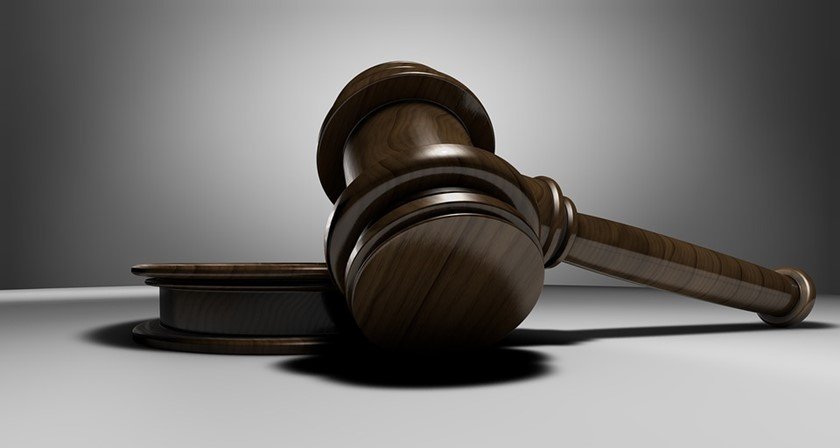The number of youths being involved in criminal activities has been on the rise over a couple of past decades. The Youth Criminal Justice Act (YCJA) was established to handle all matters relating to youth criminal activities. The justice system corrects and rehabilitates those above 12 years and below 18 years of age.
In youth/juvenile courts, there are no trials and the youths are given less punishment with a chance of getting counseling after getting out. In extreme cases, youth offenders are given adult punishment.
Pros:
1. Protects youth identity: YCJA protects the identity of juvenile suspects. Your records are wiped out once you turn 18. No one cares about what you did before turning 18.
2. Separate youth from adults: YCJA aims at separating youth from adults who can drag them to further criminal acts or abuse them. It ensures youths are not mixed with adult offenders.
3. Justice for extreme cases: The justice system is intended for the youth to be accountable for their action. They should distinguish between what is right from what is wrong in any circumstance.
4. Provide rehabilitation: The YCJA aims at providing rehabilitation and reintegration of the offenders to programs in the community that addresses their offending behavior.
5. Lenient punishment: The youths receive less punishment compared to adults who are given harsh punishments. The punishment helps the youth avoid any further legal problems and reduces youth crime rates.
6. Alternative sentencing methods: The youths have reduced jail time and are given an alternative option to complete their sentences like imposing curfews and house arrest. If sentenced to 5 years; they can spend 2 years in jail and 3 years in a rehabilitation program.
7. Protects the rights of youth offenders: YCJA helps protect the rights of youth and makes them feel safe. It also helps prevent youth from committing crimes.
8. Mandatory supervision after release: Once the offender is out of custody, close supervision is given to ensure they change their violent behavior and do not commit more crimes.
9. New chance in society: The rehabilitation program for the youth, helps put them on the right track in society through reintegration and gives them a new start.
10. Less youth in jail: This justice system ensures only fewer youths are retained in jail for serious offenses.
Cons:
1. Rehabilitative custody not well utilized: Intensive rehabilitative custody and supervision of punishment and sentencing given to the youth have not been fully utilized.
2. Lenient to youths: The youth criminal justice act is very lenient to the youth making it difficult to reduce youth crimes. There are controversies that the act should provide harsh punishment for violent crimes.
3. Doesn’t deter criminal act: The youths believe that in case of any criminal act, they will be given less punishment compared to adults and this may not be an effective method to handle youth criminal activity or deter criminal acts.
4. No distinction of the crime: The act doesn’t give a clear distinction between a serious violent crime act and a less serious crime.
5. No effective integration: There is no proper integration system for the youth after leaving the police custody.
6. Not effective: The number of incarcerated youths over the years has not reduced. The laws are not tough enough to prevent youths from committing more crimes.
7. Confusing to law enforcement: There are inconsistent penalties and sentences offered. Police discretion on young offenders can be misleading.
8. No justice for the victim: Regardless of the age of the offender, offering rehabilitation to the offender is not justice to the victim, s/he suffered in the hands of the offender.
9. Overusing courts: The courts are overused for minor cases which would have been dealt with outside the court
10. Release of offenders: YCJA requires the offenders to be released out of detention when they turn 18 or 21 regardless of incarceration at the time of the crime.




There are parts of this that are wrong. There ARE youth trials for example.
There are a number of things wrong with this post.
*******CON 4 “No distinction of the crime: The act doesn’t give a clear distinction between a serious violent crime act and a less serious crime”
Actually yes there is. Serious crimes include but are not limited to murder, attempted murder, manslaughter and violent aggravated assault. “Violent offence” is now defined in the Act as an offence in which the young person causes, attempts or threatens to cause bodily harm or endangers the life or safety of a person by creating a substantial likelihood of bodily harm. According to the Government of Canada (https://www.justice.gc.ca/eng/cj-jp/yj-jj/tools-outils/back-hist.html)
******CON 8 “No justice for the victim: Regardless of the age of the offender, offering rehabilitation to the offender is not justice to the victim, s/he suffered in the hands of the offender.”
yes that is partially true, nothing can fully heal the victim, but what has happened has happened and we can not dwell in the past. Do we live in a society where we go by “an eye for an eye and a tooth for a tooth?” If you think justice is making the offender miserable then I question your sense of justice. The aim of this system to educate offenders and raise them in a way that makes them law-abiding citizens in order to prevent further offenses. Rather than locking a kid up in jail with other criminals to learn from, I think it is wiser for them to learn in society where there is good among the bad (no place is perfect). If you are requesting for longer sentences and the youth offender to be held in a youth custody faculty then consider this “Making the system stricter and sending more youths to court only increases the amount of money spent on youth justice services and programs but does not increase the safety of the public said by professors at the university of waterloo, Queens and Oxford (http://www.youthjusticeontario.ca/wp-content/uploads/2015/12/Evaluating-YCJA-After-5-Years-Bala-Carrington-Roberts-2009-.pdf) Although the damage can not be reversed. There are extrajudicial Sanction that has the offender compensate the victim. The victim according to the act must be treated with curtsy, respect and empathy. The victim also has the Canadian Victims Bill of Rights to advocate for them.
******Con 9 “Overusing courts: The courts are overused for minor cases which would have been dealt with outside the court”
The whole point of the YCJA is to keep minors out of the court by using other disciplinary actions like extrajudicial measures and sanctions (https://www.justice.gc.ca/eng/cj-jp/yj-jj/tools-outils/back-hist.html) so no courts are not overused.
********CON 10 “Release of offenders: YCJA requires the offenders to be released out of detention when they turn 18 or 21 regardless of incarceration at the time of the crime.”
This is also a lie. If the minor commits one of the serious crimes outlined by the YCJA then the offender can be sentenced as an adult without the leniency and the publication ban. The offender will be held in a youth custody facility until the age of 18 and once of legal age they will continue the rest of their sentence in an adult facility (aka prison). THEY ARE NOT RELEASED AFTR TURNING 18. If they complete their assigned sentence or are given parole they are strictly supervised and under prohibition. Some are tracked with those ankle monitors.
****sorry I had to reply to post my comment. It would not allow for an independent comment
be so for real, just wait till someone you love gets killed or harmed seriously by a young person and then say “but what has happened has happened and we cannot dwell in the past” like what. Now the person you love has died and is gone forever and your going to be happy with a youth getting a 5 year jail sentence for the brutial murder of your kids.. no your not going to be. Thats not justice. Are you really under the impression its ok for the accused to get a consiquence not suffecient. an “eye for an eye” is the society we live in because if you take a life yours might be taken in prison. karma comes back and saying “whats happened has happened and we cannot dwel in the past” is extremly selfish and not sympathetic. think before you speak
this was a real banger mate
this made my migraine worse
There are a number of things wrong with this post.
*******CON 4 “No distinction of the crime: The act doesn’t give a clear distinction between a serious violent crime act and a less serious crime”
Actually yes there is. Serious crimes include but are not limited to murder, attempted murder, manslaughter and violent aggravated assault. “Violent offence” is now defined in the Act as an offence in which the young person causes, attempts or threatens to cause bodily harm or endangers the life or safety of a person by creating a substantial likelihood of bodily harm. According to the Government of Canada (https://www.justice.gc.ca/eng/cj-jp/yj-jj/tools-outils/back-hist.html)
******CON 8 “No justice for the victim: Regardless of the age of the offender, offering rehabilitation to the offender is not justice to the victim, s/he suffered in the hands of the offender.”
yes that is partially true, nothing can fully heal the victim, but what has happened has happened and we can not dwell in the past. Do we live in a society where we go by “an eye for an eye and a tooth for a tooth?” If you think justice is making the offender miserable then I question your sense of justice. The aim of this system to educate offenders and raise them in a way that makes them law-abiding citizens in order to prevent further offenses. Rather than locking a kid up in jail with other criminals to learn from, I think it is wiser for them to learn in society where there is good among the bad (no place is perfect). If you are requesting for longer sentences and the youth offender to be held in a youth custody faculty then consider this “Making the system stricter and sending more youths to court only increases the amount of money spent on youth justice services and programs but does not increase the safety of the public said by professors at the university of waterloo, Queens and Oxford (http://www.youthjusticeontario.ca/wp-content/uploads/2015/12/Evaluating-YCJA-After-5-Years-Bala-Carrington-Roberts-2009-.pdf) Although the damage can not be reversed. There are extrajudicial Sanction that has the offender compensate the victim. The victim according to the act must be treated with curtsy, respect and empathy. The victim also has the Canadian Victims Bill of Rights to advocate for them.
******Con 9 “Overusing courts: The courts are overused for minor cases which would have been dealt with outside the court”
The whole point of the YCJA is to keep minors out of the court by using other disciplinary actions like extrajudicial measures and sanctions (https://www.justice.gc.ca/eng/cj-jp/yj-jj/tools-outils/back-hist.html) so no courts are not overused.
********CON 10 “Release of offenders: YCJA requires the offenders to be released out of detention when they turn 18 or 21 regardless of incarceration at the time of the crime.”
This is also a lie. If the minor commits one of the serious crimes outlined by the YCJA then the offender can be sentenced as an adult without the leniency and the publication ban. The offender will be held in a youth custody facility until the age of 18 and once of legal age they will continue the rest of their sentence in an adult facility (aka prison). THEY ARE NOT RELEASED AFTR TURNING 18. If they complete their assigned sentence or are given parole they are strictly supervised and under prohibition. Some are tracked with those ankle monitors.
Very Factual
so factual indeed